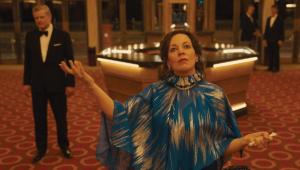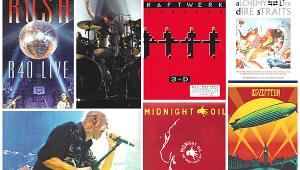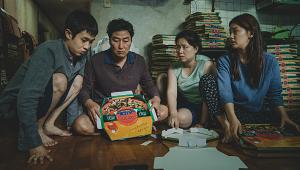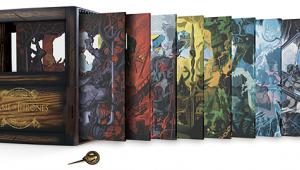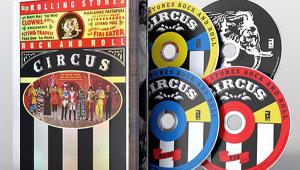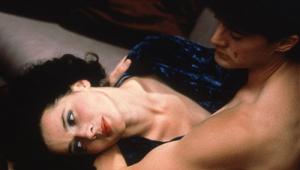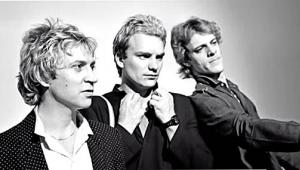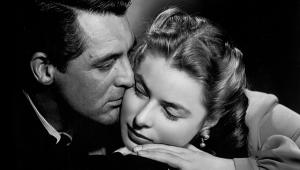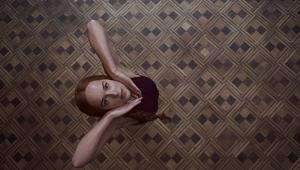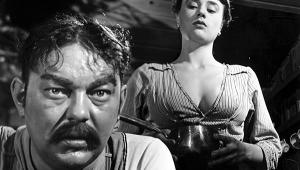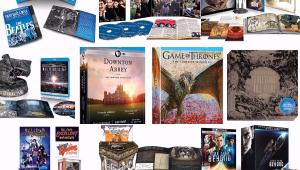Snow White Lives Page 3
Brighter Tomorrows Carey doesn't betray the pressure he must feel to sprinkle a little pixie dust on the Magic Kingdom. When we arrive at Vidfilm International Digital in Glendale, he doesn't hesitate to slap the linen-clad back of Bob Chapek, who as president of Buena Vista Entertainment is one of the bigger cheeses within the Mouse House.
"Our division has been extraordinarily successful," Chapek said, adding that four of the five top-selling video titles from the past year belong to his division. "Snow White is such a revolutionary disc that it will be a new pacesetter for the rest of the industry as everyone else tries to leapfrog what we do. And it's really important for Disney as a company, because this title sets expectations for future Platinum titles. We're very proud of the restoration of the audio and video for this movie. No one has seen this film look this good since the original animators."
Chapek's statement speaks volumes, given that the film has gone through several restorations (see "Snow White's Digital Makeover," facing page). Carey displayed a before-and-after sequence in the telecine bay. "See how washed out the colors are?" he said, pointing to Snow White's butter-colored skirt and the walls of the dwarfs' cottage. Telecine colorist Mitch Drickman flipped a switch, and the colors brightened. "Now see how much more vibrant that looks," Carey said.
But even state-of-the-art cleaning and color correction present problems. "Once the color was corrected, we saw that with contrast came a sharpening of the lines around the characters," said Carey. To get rid of those coloring-book outlines, the settings for the corrections were changed to soften the effect, and the entire film was reprocessed.
Roy Disney explained how the goal was not to make the DVD look "better" than the original. "Instead, technology has given us the ability to reproduce exactly what was intended in terms of the color, tones, and degrees of brightness," said Disney, who is vice chairman of the Walt Disney Company and chairman of Walt Disney Feature Animation.
The Sound of Magic In a building on the Disney lot near the intersection of Dopey Drive and Mickey Avenue, Terry Porter faced the task of restoring the film's soundtrack. Seated at an 18-foot console within a cavernous 420-seat theater, Porter spent hour after hour tweaking levers, dials, and knobs to convert the 65-year-old monaural soundtrack into a state-of-the-art, 5.1-channel mix.
"Snow White is a tough one because we want to walk a fine line between remastering it and keeping the original integrity of the soundtrack intact," said Porter, a three-time Academy Award-nominated sound engineer who's worked on such modern classics as The Little Mermaid, Beauty and the Beast, and Aladdin. "I wanted to create a pleasant listening environment, but in no way, shape, or form did I want to do something that would make someone feel that I did something to it."
Porter explained that there were two overall problems he had to deal with. "One was surface hiss because of the sound-recording process that was used in 1937." The second was dust particles, which adhere to the film itself and cause audible snaps. ‰
Carey, a former sound engineer and Porter's former boss, explained that when you remove the hiss, there's the danger of losing the spectral content of the soundtrack itself. Added Porter: "Even with dialogue, there's a hiss level, and the last thing I want to happen is to be left with," he said, cupping a hand over his mouth to muffle his words, "is people talking like this."
Porter worked with an editor to slice out snaps and pops, filling in the blanks with the material that immediately preceded it. "But if it altered the track in some audible way, we left the pop or snap in," he said.
To rid the soundtrack of the tinny sound native to many mono recordings, Porter re-equalized it. But handling distortion was trickier. "Those original recordings are what they are, so you warm them up the best you can through things like equalization and compression - the same techniques I'd use on a modern film that has a production soundtrack that isn't very good."
 The author (right) talks to Terry Porter and Chris Carey about restoring the film's sound. The author (right) talks to Terry Porter and Chris Carey about restoring the film's sound. | 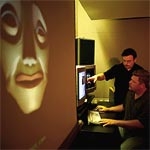 James Stapp and Eamonn Butler create digital animation of the Magic Mirror, which serves as the DVD's "host" James Stapp and Eamonn Butler create digital animation of the Magic Mirror, which serves as the DVD's "host" |
- Log in or register to post comments
